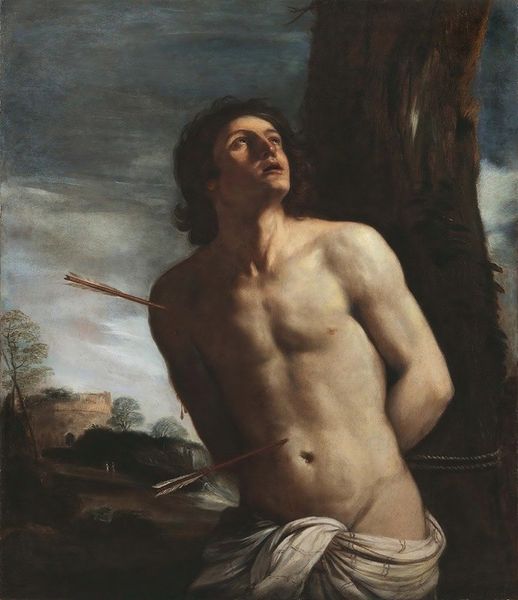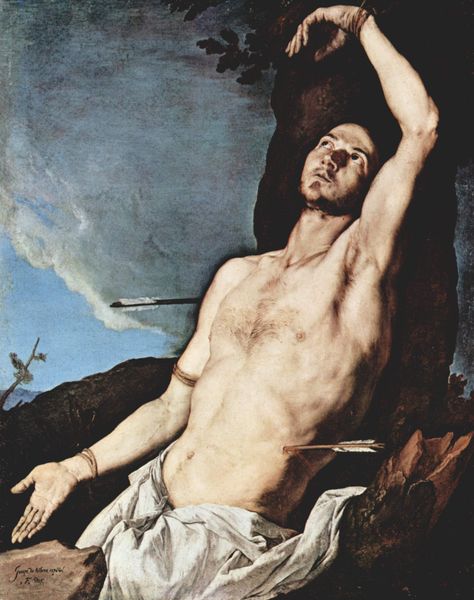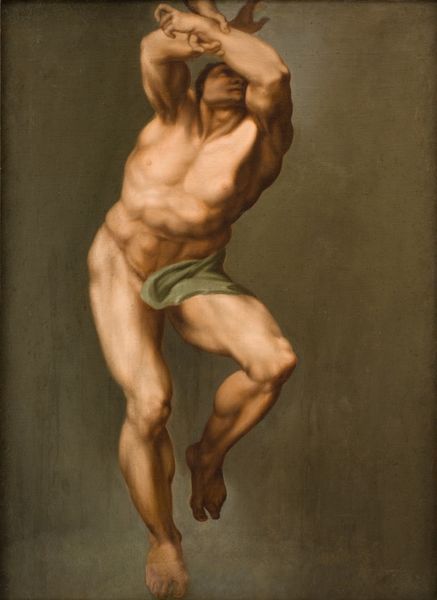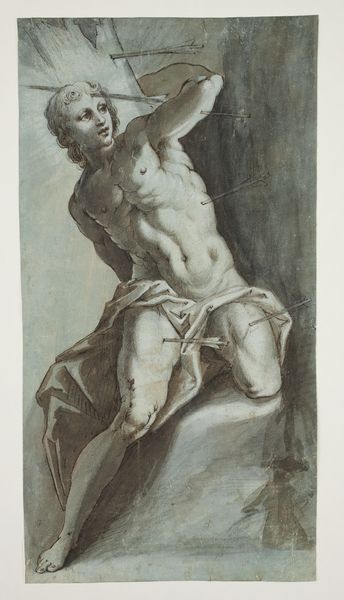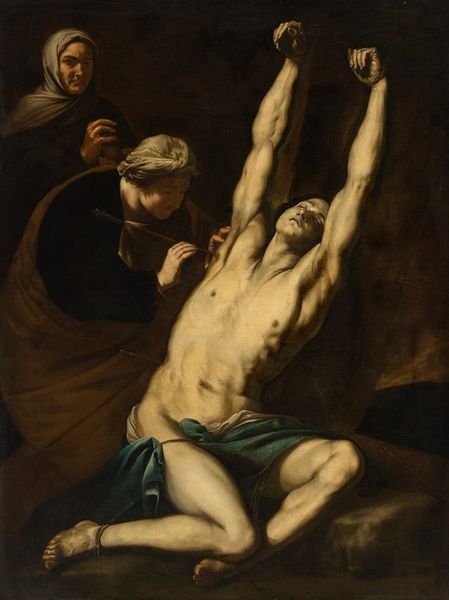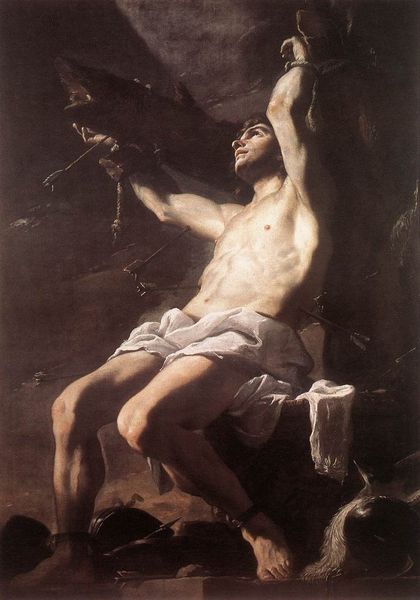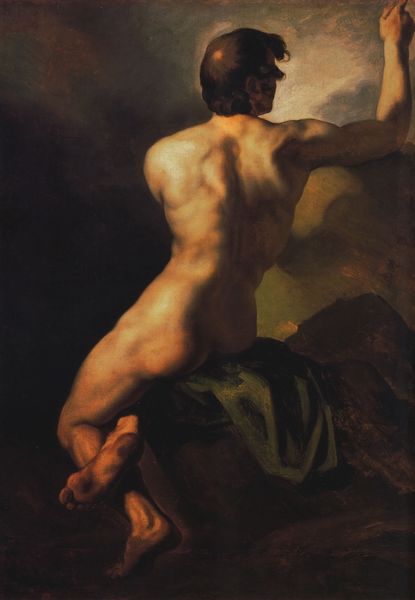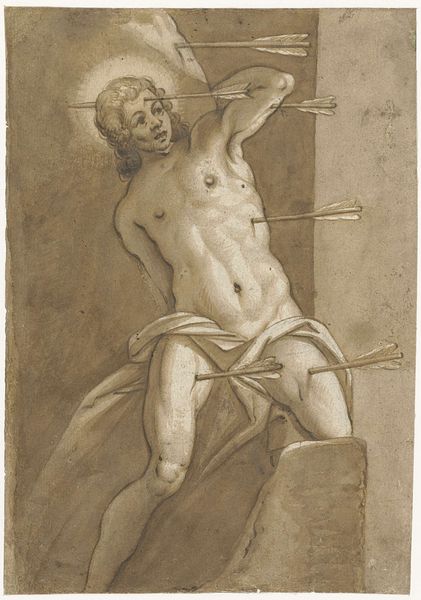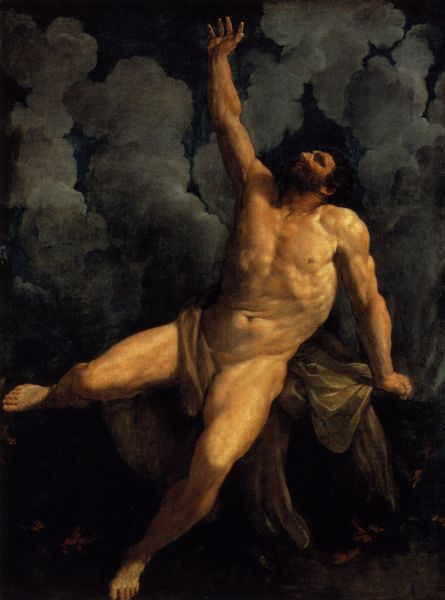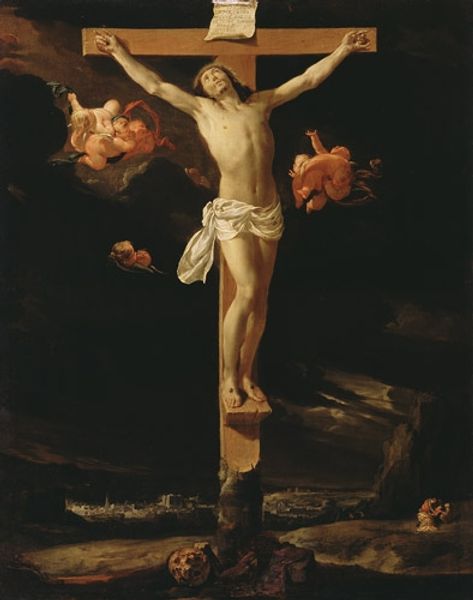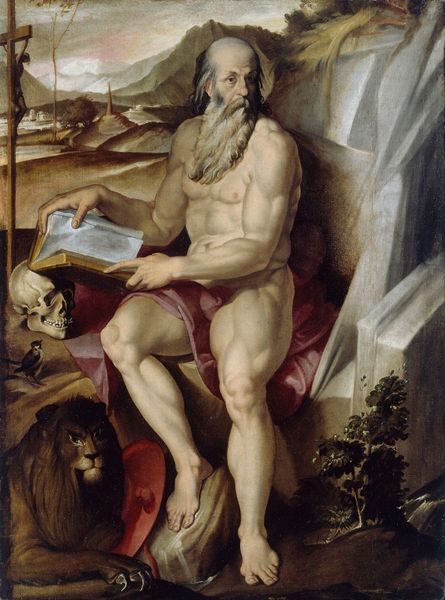
Dying Hercules 1812
0:00
0:00
samuelmorse
Yale University Art Gallery (Yale University), New Haven, CT, US
painting, oil-paint
#
allegory
#
painting
#
oil-paint
#
landscape
#
classical-realism
#
figuration
#
oil painting
#
romanticism
#
mythology
#
history-painting
#
nude
Copyright: Public domain
Samuel Morse, better known for inventing the telegraph, painted this canvas of the Dying Hercules with oils during his studies in Europe. Hercules, the Roman name for the Greek hero Heracles, was famous for his strength. This painting is not just a depiction of a mythological figure, but also a commentary on the aspirations and anxieties of early 19th-century American art. Morse’s artistic training took place against the backdrop of a newly formed nation seeking to define its cultural identity, the establishment of art academies such as the National Academy of Design, which Morse himself helped found, reflected a desire to cultivate native artistic talent and elevate the status of art in American society. To further understand this painting, we can look into the archives of the National Academy, as well as the writings of Morse, and other artists of his time, to see how they were thinking about the role of art in shaping American identity and culture. These resources can help us understand what it meant to be an artist in this period.
Comments
No comments
Be the first to comment and join the conversation on the ultimate creative platform.
